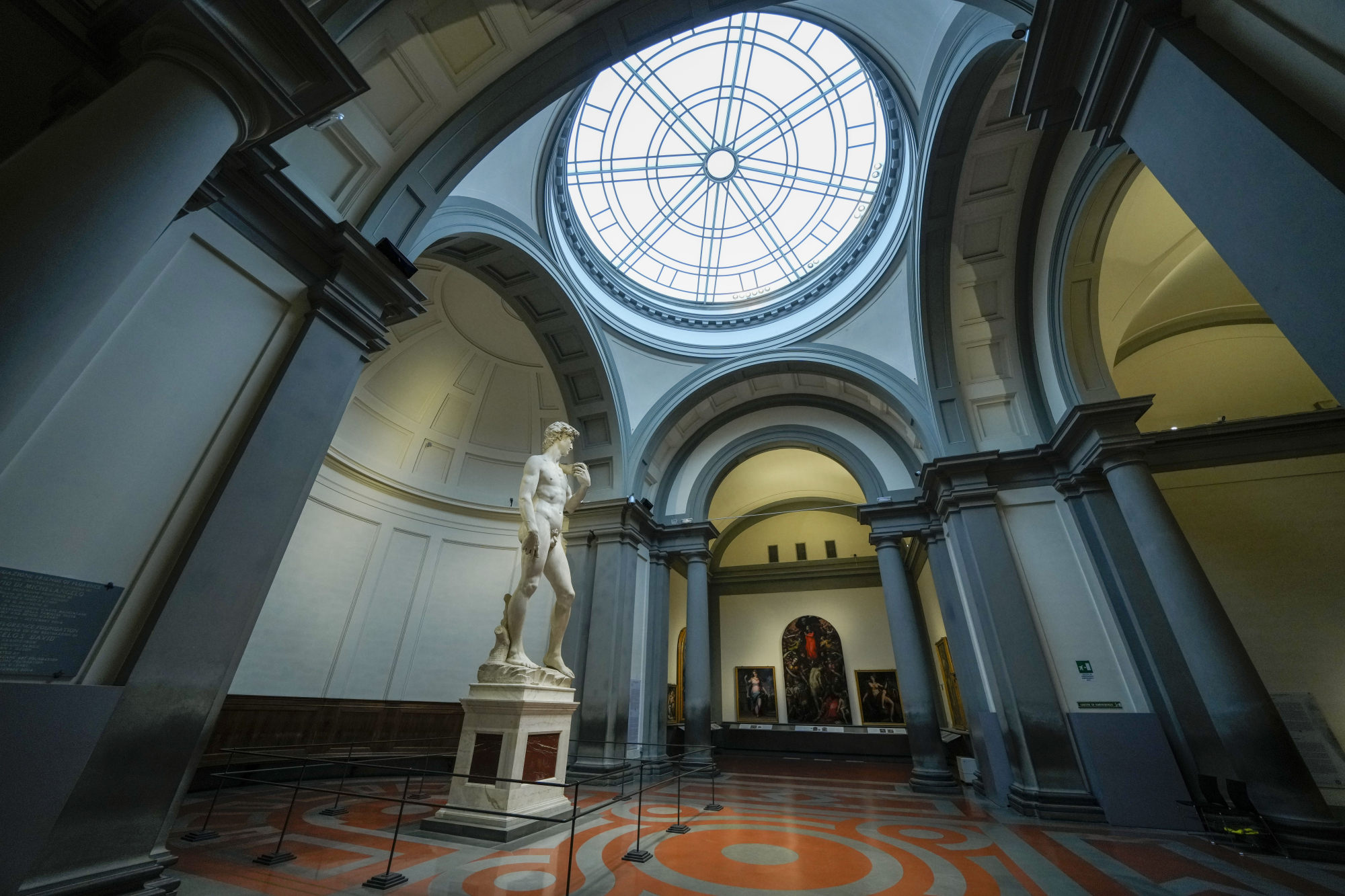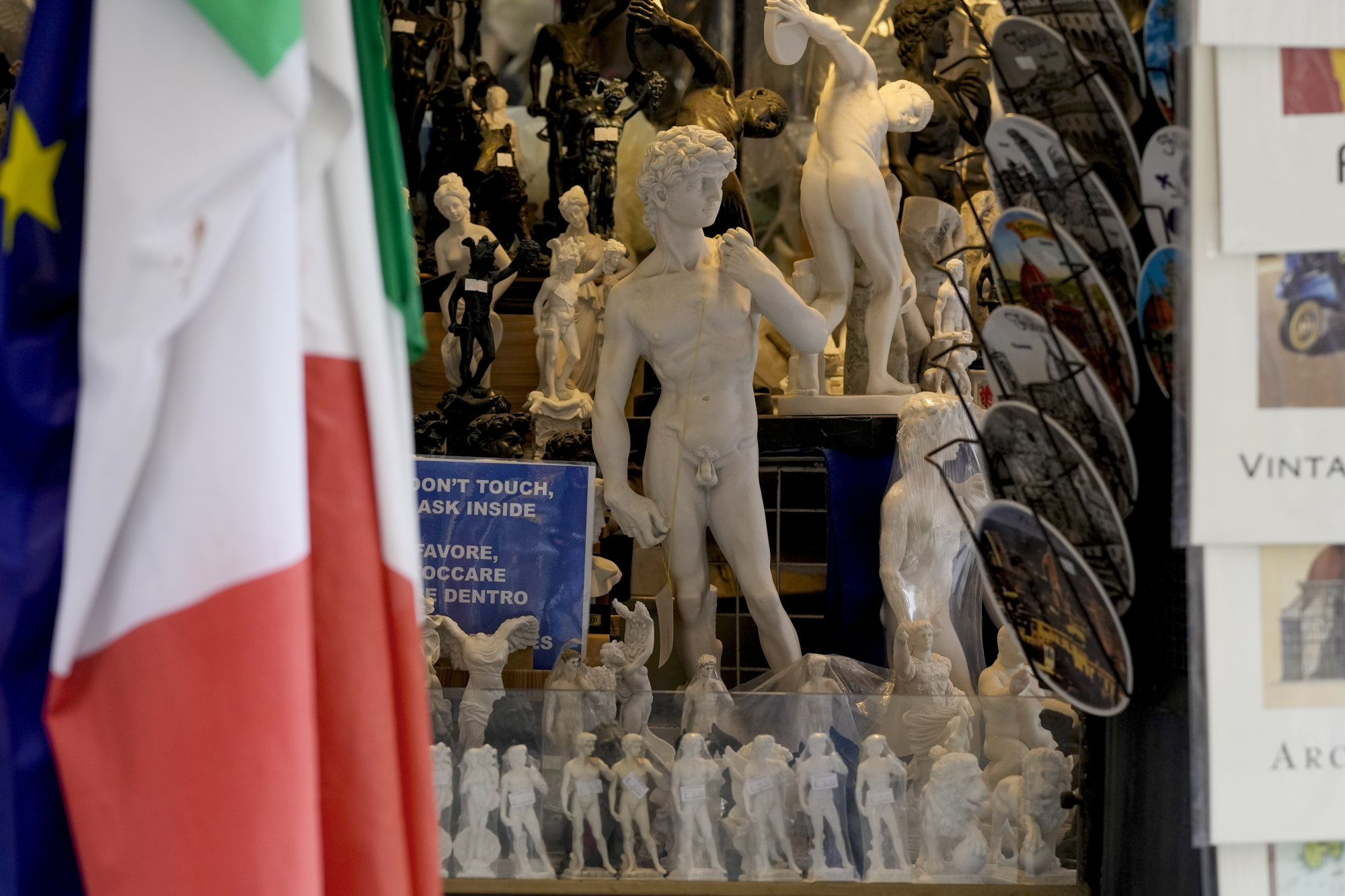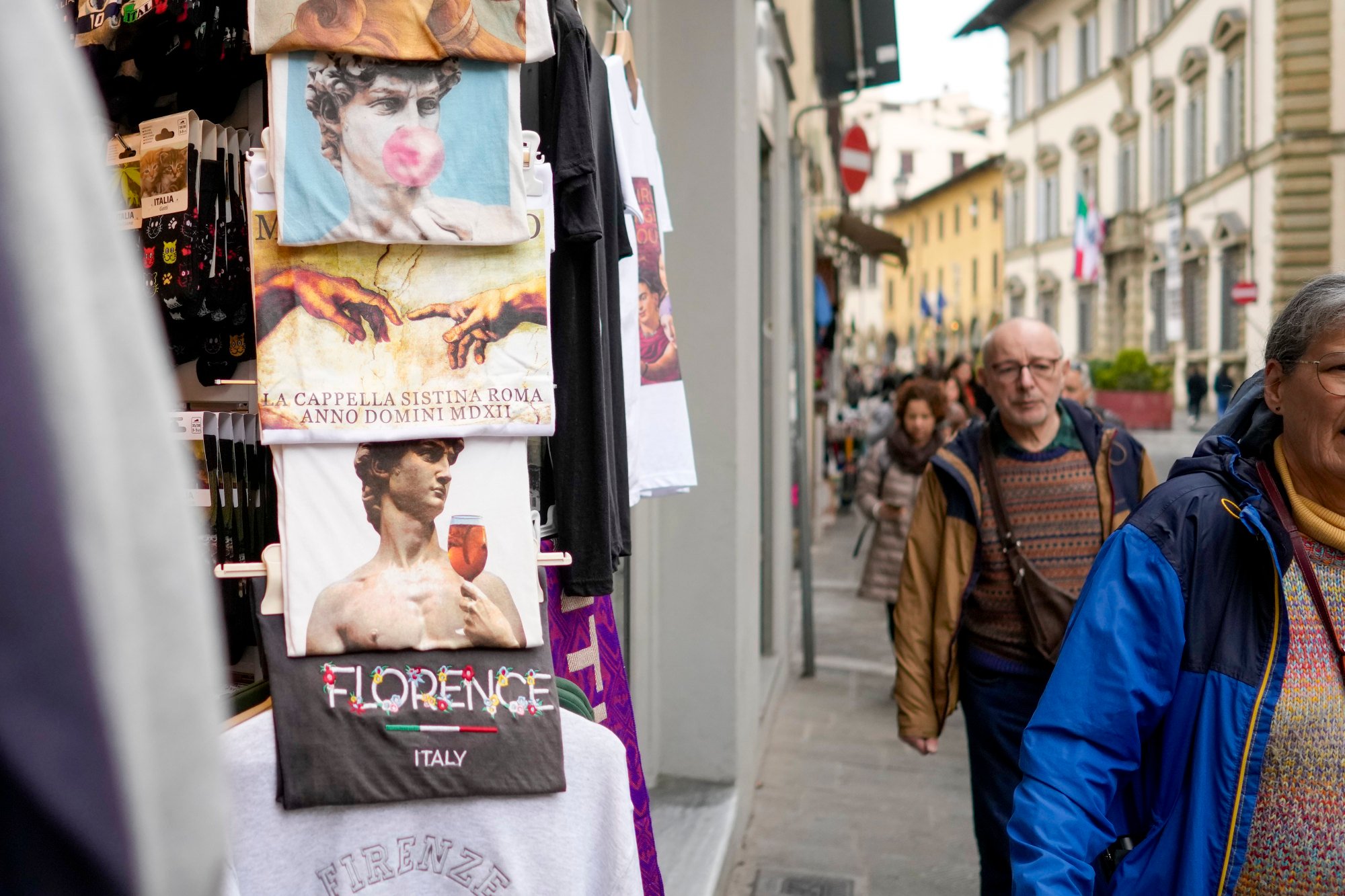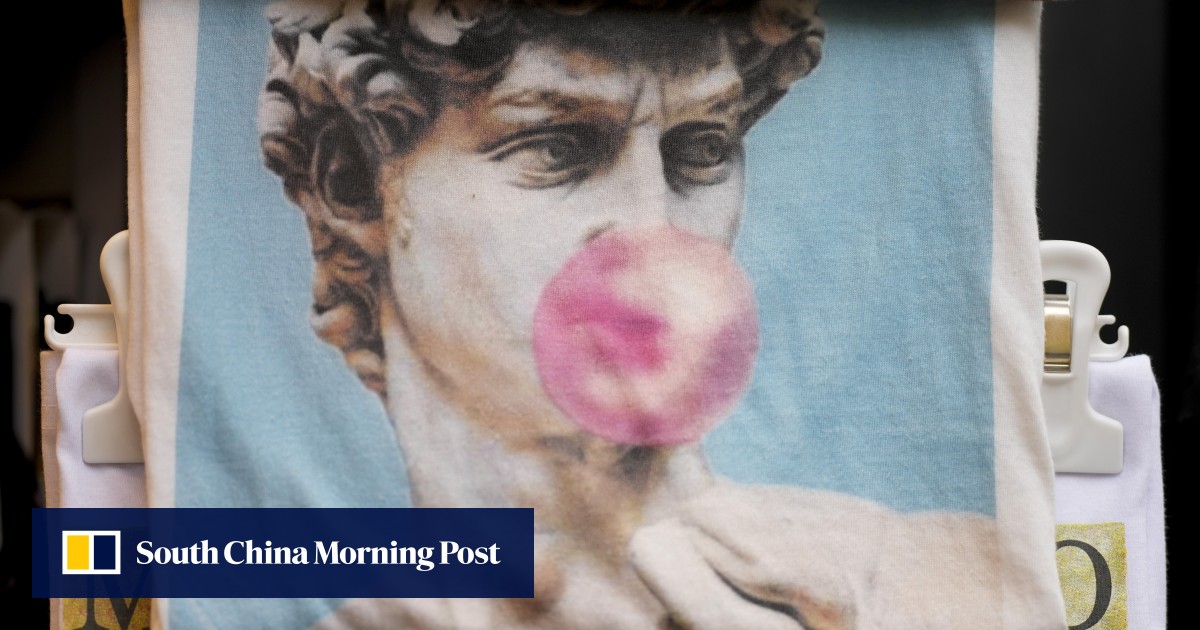At Hollberg’s behest, the state’s lawyer office in Florence has launched a series of court cases invoking Italy’s landmark cultural heritage code, which protects artistic treasures from disparaging and unauthorised commercial use. The Accademia has won hundreds of thousands of euros in damages since 2017, Hollberg says.
‘It’s not revenge’: restitution at Europe’s largest museum of Asian art
‘It’s not revenge’: restitution at Europe’s largest museum of Asian art
“There was great joy throughout all the world for this truly unique victory that we managed to achieve, and questions and queries from all over about how we did it, to ask advice on how to move,” she says.
Legal action has followed to protect masterpieces at other museums, not without debate, including Leonardo’s Vitruvian Man, Donatello’s David and Botticelli’s The Birth of Venus.

The decisions challenge a widely held practice that intellectual property rights are protected for a specified period before entering the public domain – the artist’s lifetime plus 70 years, according to the Berne Convention signed by more than 180 countries, including Italy.
More broadly, the decisions raise the question of whether institutions should be the arbiters of taste, and to what extent freedom of expression is being limited.
“It raises not just legal issues, but also philosophical issues,” says Thomas Danziger, an art market lawyer based in New York. “What does cultural patrimony mean? How much of a stranglehold do you want to give institutions over ideas and images that are in the public domain?”

He pointed to Andy Warhol’s famous series inspired by Leonardo’s The Last Supper.
“Are you going to prevent artists like Warhol from creating what is a derivative work?” he asks.
“Many people would view this as a land grab by the Italian courts to control and monetise artworks in the public domain that were never intended to be charged for.”
Italy’s cultural code is unusual in its scope, essentially extending in perpetuity the author’s copyright to the museum or institution that owns it.

Elsewhere in Europe, Greece has a similar law, adopted in 2020, which requires a permit to use images of historic sites or artefacts for commercial use, and forbids the use of images that “alter” or “offend” the monuments in any way.
Hollberg won her first case against ticket scalpers using David’s image to sell marked-up entrance packages outside the Accademia’s doors. She has also targeted the magazine GQ Italia for imposing a model’s face on David’s body, and luxury fashion brand Longchamp’s cheeky Florence edition of its trademark “Le Pliage” bag featuring David’s more intimate details.
Longchamp noted the depiction was “not without irony” and said the bag was “an opportunity to express with amused lightness the creative force that has always animated this wonderful city”.

No matter how many lawsuits Hollberg has initiated – she won’t say how many – the proliferation of David likenesses continues.
“I am sorry that there is so much ignorance and so little respect in the use of a work that for centuries has been praised for its beauty, for its purity, for its meanings, its symbols, to make products in bad taste, out of plastic,” Hollberg says.
Based on Hollberg’s success and fortified by improved search engine technology, the Opera di Santa Maria del Fiore, the private entity that is custodian of Florence Cathedral, has started going after commercial enterprises using the cathedral’s famed dome for unauthorised, and sometimes denigrating, purposes – including men’s and women’s underwear.
Qatar museum director hails International Cultural Summit in Hong Kong
Qatar museum director hails International Cultural Summit in Hong Kong
So far, cease-and-desist letters have been enough to win compliance without turning to the courts, adding an extra half a million euros (US$537,000) a year to revenues that top €30 million, according to Luca Bagnoli, president of the opera.
“We are generally in favour of the freedom of artistic expression,” Bagnoli says. “When it comes to reinterpreted copies, it becomes a little more difficult to understand where artistic freedom ends and our image rights begin.”
Italy’s cultural heritage code in its current form has been on the books since 2004, and while Hollberg’s cases were not the first, they have represented an acceleration, experts say.
They add the aggressive stance could backfire, discouraging the licensing of Italy’s artworks, a source of revenue, while also limiting the reproduction of masterpieces that serve as cultural ambassadors.

